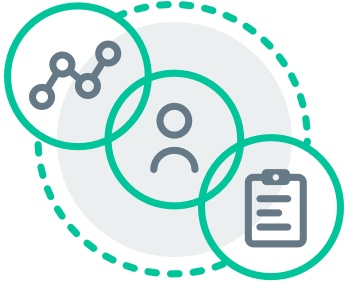Sharing Research Data Is Becoming More Important. Here’s How Libraries Can Help
Research data are the underlying evidence that supports the claims made in scholarly publications, and making these data publicly available is a fundamental aspect of open access publishing. Yet, owing to a number of obstacles—some real, some perceived—many researchers are reluctant to share their data with the broader research community.

Research data are the underlying evidence that supports the claims made in scholarly publications, and making these data publicly available is a fundamental aspect of open access publishing. Yet, owing to a number of obstacles—some real, some perceived—many researchers are reluctant to share their data with the broader research community.
Publishers and librarians can work together to help researchers overcome these obstacles, says Jamie Hutchins, director of open research in the Americas for Taylor & Francis Group. Doing so has important benefits for researchers, their institutions, and society as a whole.
Research data can take many forms, and they don’t just refer to the numbers found in spreadsheets.  What research data look like varies by discipline, and it can include items such as notes, lab books, and sketches; media such as photos, videos, and slides; survey responses and interview transcripts; models and algorithms; and the software or code written to run simulations and analyze information.
What research data look like varies by discipline, and it can include items such as notes, lab books, and sketches; media such as photos, videos, and slides; survey responses and interview transcripts; models and algorithms; and the software or code written to run simulations and analyze information.
Making this information publicly available helps other researchers reproduce a study’s findings or build on this body of knowledge. It encourages more connection and collaboration between researchers, leading to new advancements.
Data sharing is typically encouraged within the scientific community, and new federal guidelines such as the Nelson memo will further expand this practice. However, making research data publicly available requires a great deal of time, effort, and expertise that not all researchers possess. As a result, this practice is not happening as often as it should be.
Lack of time and expertise are key barriers
In the 2020 “State of Open Data” survey from Digital Science, researchers identified a number of problems or concerns they have with publicly sharing their research data.
For instance, researchers might not understand how to format and prepare their data to be sharable and reusable, or they might not have the time to do this for themselves. Many researchers are also unsure about what information they have permission to share and the associated licensing and copyright issues that might arise.
As the Digital Science report states: “We expect [researchers] to be experts in their own discipline. ... But we also expect researchers to know a thing or two, preferably more, about information security: Where and how to store data in a way that permits using the data not only now but in the future as well, without the data being accessible to people who have nothing to do with the data. … [We expect them to] be legal experts and, in that capacity, know how to successfully navigate a sometimes very difficult landscape of intellectual property rights, licenses, privacy, and maybe patenting as well.”
These are challenges that librarians, as experts in working with data and navigating copyright issues, can help researchers solve. Publishers also play a key role: A platform such as F1000 from Taylor & Francis includes tools to help researchers store and share their data while also keeping this information secure.
Overcoming researchers’ concerns
Beyond these technical hurdles, researchers have expressed concerns that their data might be misused. Some researchers are reluctant to give up control over their research data, period. “For many, even the idea that data should be reused by other researchers has been a barrier to the adoption of open research principles,” Hutchins states.
 However, Hutchins notes that sharing data widely not only benefits society; it also brings clear and direct benefits to the researchers themselves. For instance, it increases the discoverability of their work, helping others to find, use, and cite their research outputs. This, in turn, raises the profile of researchers—and the institutions that employ them.
However, Hutchins notes that sharing data widely not only benefits society; it also brings clear and direct benefits to the researchers themselves. For instance, it increases the discoverability of their work, helping others to find, use, and cite their research outputs. This, in turn, raises the profile of researchers—and the institutions that employ them.
In fact, one study found that journal articles linking to data in research repositories had up to 25 percent more citations than those without access to the underlying data.
“From a publisher perspective, we have some evidence that even the minimal step of including a Data Availability Statement in a research article—something that F1000 requires and is now being adopted by other journals—can increase its impact,” Hutchins says.
Some institutions, such as the University of Florida (UF), have redesigned their library services to support research at their university more effectively, such as by offering consulting services and guidance on best practices for sharing research data. “We often hear from researchers at all stages of their career that they aren’t aware of the resources and support services available to them,” Hutchins says. “This seems like a clear area for partnership between libraries and publishers.”
Hutchins and Natya Hans, informatics and reproducibility librarian for the UF Libraries’ Academic Research Consulting & Services department, will be sharing their insights about how campus libraries can help researchers share their software and data during a Sept. 28 webinar presented by Library Journal in conjunction with F1000.
Learn more and register for this event.
 |
SPONSORED BY

RELATED
ALREADY A SUBSCRIBER? LOG IN
We are currently offering this content for free. Sign up now to activate your personal profile, where you can save articles for future viewing









Add Comment :-
Comment Policy:
Comment should not be empty !!!